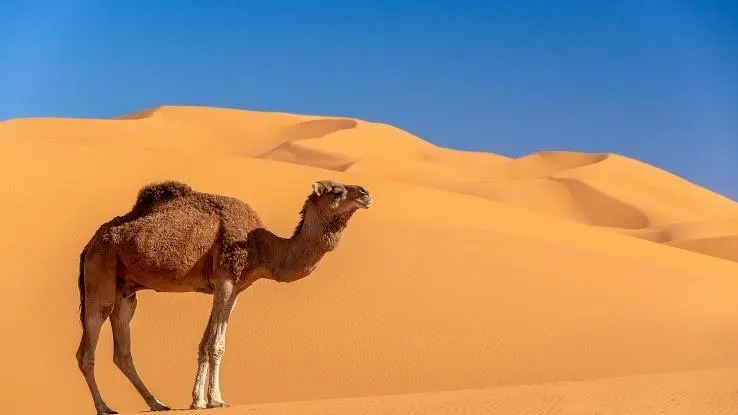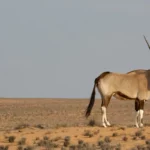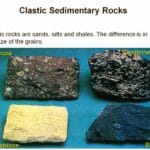Welcome, wanderers, to the vast and enigmatic desert, a land where life persists against incredible odds. While the desert may often appear desolate, it teems with hidden wonders. Just like the mountains that stand as ancient guardians and the rocks that whisper tales of bygone eras, the desert possesses a captivating story to tell. Join us on an expedition into the abiotic heart of this extraordinary ecosystem, from the mesmerizing dance of dunes to the symphony orchestrated by wind and water. Together, let’s unlock the secrets held within the sands and unravel the magic that makes this environment so captivating.
Non-Living Things in the Desert
When you envision a desert, what springs to mind? Perhaps an expanse of sand shimmering under the relentless sun, punctuated by the occasional stoic cactus. But have you ever paused to consider the elements that shape this harsh yet beautiful landscape – the non-living forces that govern the desert’s rhythm? These “non-living things,” or abiotic factors as scientists call them, are the unsung heroes of the desert, silently orchestrating the drama of life in this extreme environment.
We’re referring to elements like water (or its scarcity), air, rocks, mountains, and even sunlight. These components might appear fundamental, yet they form the bedrock of this unique and surprisingly diverse ecosystem.
Consider water, the lifeblood of any environment, yet a scarce commodity in the desert. This scarcity instantly elevates its value, dictating where life can take root. The availability of water determines which plants can survive and, consequently, which animals can make the desert their home.
Then there’s the air, a restless sculptor shaping the desert’s personality. The way it moves and heats up creates the dramatic temperature swings that deserts are famous for. It carries dust and moisture (or the lack thereof), influencing everything from how plants absorb nutrients to the types of animals that can tolerate desert life.
Rocks and mountains, those stoic giants, play a more dynamic role than you might think. They act as architects, crafting microclimates within the larger desert ecosystem. These pockets of shade, cooler temperatures, or increased moisture can be the difference between life and death for desert dwellers seeking refuge from the scorching sun.
What’s truly fascinating is how these abiotic factors have driven the evolution of the incredible adaptations we see in desert life. Think of the iconic cacti – their ability to store water, their spines that minimize moisture loss – these are ingenious evolutionary responses to the challenges posed by a water-scarce environment.
However, this delicate balance is under constant threat. Climate change, with its potential to disrupt rainfall patterns and intensify temperatures, could have a profound impact on these crucial abiotic factors. And since these factors are the foundation of the entire desert ecosystem, any change creates a ripple effect, influencing the survival of plants and animals alike.
Scientists are diligently studying these intricate relationships, and there’s still much to uncover. For instance, how will different desert regions be affected by a warming climate? Will some species prove more resilient than others? These are just a few of the questions researchers are grappling with today.
The next time you find yourself contemplating the desert, spare a thought for those “non-living things.” They are not merely part of the scenery but vital players in the ongoing saga of survival and adaptation in one of Earth’s most extreme environments.
What Defines Non-Living Components in a Desert Ecosystem?
We’ve established that deserts aren’t exactly synonymous with lush rainforests or babbling brooks. But have you ever stopped to ponder the very fabric of the desert itself – the non-living elements that we often overlook, like rocks, sand, and even the air we breathe? Believe it or not, these “abiotic” components are the unsung architects of the desert, quietly shaping life as we know it in these demanding landscapes.
Let’s begin with the most conspicuous: water, or rather, the lack of it. Deserts are infamous for their aridity, and this water scarcity influences every facet of life. From where plants and animals can eke out an existence to the ingenious strategies they’ve developed to obtain and conserve this precious resource, it all boils down to how much rain falls – or doesn’t. But it’s not just about the quantity of water; the way it interacts with the air is equally crucial. Deserts possess this parched air that seems to draw moisture from everything, making it a constant struggle for plants to retain the water they so desperately need.
Then there’s temperature, playing its dramatic role in the desert theater. Deserts are like colossal ovens during the day, with the sun blazing down mercilessly, only to transform into frigid iceboxes at night. This extreme temperature swing places enormous stress on the plants and animals that call the desert home, compelling them to evolve ingenious ways to cope.
Now, let’s shift our focus to the landscape. Deserts are renowned for their awe-inspiring geological formations – towering mountains and their deep-cut canyons, vast plains of ever-shifting sand dunes, and rocky outcrops that appear to materialize from nowhere. These features aren’t merely aesthetically pleasing; they play a vital role in creating pockets of life by providing shade, shelter from the relentless wind, and even collecting dew, a crucial source of moisture for some desert dwellers. Moreover, these rocks and mountains gradually break down over time, releasing valuable nutrients into the often impoverished desert soil, acting as a slow-release fertilizer for the tenacious plants that manage to take root.
The truly remarkable aspect is how all of this – the lack of water, the wild temperature swings, the rugged terrain – interacts to mold the desert ecosystem. It’s akin to a giant, intricate jigsaw puzzle, where each piece, whether living or non-living, fits together with remarkable precision. The desert’s inhabitants have acquired extraordinary adaptations to thrive in these demanding conditions. Some plants have developed deep root systems that tap into underground water sources, while others have evolved ways to store water in their leaves or stems. Animals, too, have their bag of tricks – some are creatures of the night, avoiding the scorching daytime heat, while others possess specialized kidneys that allow them to survive on minimal water.
However, our understanding of deserts is constantly evolving. Scientists are still piecing together the complex interplay between living and non-living components in these fascinating ecosystems. New research is illuminating areas such as the role of microorganisms in the soil, the impact of climate change on delicate desert habitats, and the incredible adaptations of desert life. So, while we’ve made significant strides in our understanding, there’s still a treasure trove of knowledge waiting to be unearthed about these seemingly barren, yet incredibly diverse and resilient ecosystems. Who knows what other secrets the desert holds, just waiting to be revealed?
Curious to know more about the vast deserts in Africa? Click to unfold the hidden secrets of these remarkable landscapes.
How do Rocks and Sand Shape the Desert Landscape?
Continuing our journey, let’s delve deeper into how these seemingly simple elements, rocks and sand, collaborate to create the stunning diversity we observe in desert landscapes.
Imagine the wind as a tireless artist, perpetually at work, sculpting and carving the desert with an unseen hand. As it whips across the open expanse, it gathers tiny grains of sand, using them like sandpaper on the rocks. Over time, this relentless process can wear away even the most resilient rock, creating intricate patterns and revealing layers beneath, like peeling back the pages of time.
What about those sand dunes, those undulating waves of sand? They are not static piles but rather dynamic features, constantly shifting and morphing as the wind propels them across the desert floor. They’re like a giant sandbox where nature indulges its creative whims! Some dunes, known as barchan dunes, even form those captivating crescent shapes with “horns” pointing in the direction of the prevailing wind. Pretty impressive, right?
But the wind’s influence extends beyond erosion. It’s also a carrier, a transporter of materials. Remember those ubiquitous sand grains? When the wind loses its momentum, it deposits them, sometimes in massive quantities. This is how we get those expansive, rippling sand sheets that stretch as far as the eye can see.
Let’s not forget about the rocks themselves. They serve as the desert’s skeletal structure, offering hints of its ancient past. Some rocks, such as those formed from cooled lava, might tell a tale of fiery volcanic eruptions that once rocked the landscape. Others, formed from layers of sand and minerals compressed over eons, provide clues about what the environment was like in distant epochs.
And those colors! Have you ever noticed how some desert rocks are adorned with vibrant hues of red, yellow, and black? This isn’t mere coincidence. It’s a captivating example of how even the slightest bit of moisture can have a profound impact. When the rare desert rain falls, it can dissolve minerals present in the rocks. As the water evaporates, those minerals are left behind, creating a thin, colorful coating called desert varnish. It’s like nature’s own form of graffiti, adding another layer of beauty to these already awe-inspiring landscapes.
Scientists are still unraveling all the intricacies of how these processes function, but one thing is certain: rocks and sand are the dynamic duo of the desert. They work in concert to create a world that is both visually stunning and ecologically fascinating.
Want to learn more? Keep exploring! Dive into the intriguing world of desert bugs and discover their extraordinary adaptations to survive in extreme desert conditions.
The Impact of Mountains and Air on Desert Life
We often perceive deserts as vast, empty spaces, but in reality, they teem with life! It’s remarkable how plants, animals, and even microscopic organisms have devised ingenious ways to not just survive but thrive in these challenging environments. A significant part of what makes deserts so unique lies in the influence of, surprisingly, mountains and air.
You might be wondering how something as massive and seemingly immobile as a mountain could impact something as ever-present as air, but it all comes down to their interaction. Mountains act like colossal walls, literally squeezing the moisture out of the air. Winds carrying moisture from distant oceans slam into these mountain ranges and are forced upwards. As the air rises, it cools, and cooler air can’t hold as much moisture. This often leads to rainfall on the windward side of the mountain (the side facing the wind). By the time the wind crosses over the mountain peak, it’s lost a significant amount of its moisture, creating what’s called a “rain shadow” on the leeward side. This rain shadow effect is one of the primary reasons why many deserts are so dry – they simply aren’t geographically positioned to catch those precious rain clouds!
But the influence of air goes far beyond just rainfall. The temperature of the air, along with the amount of moisture it holds (known as humidity), plays a crucial role in the survival strategies of desert plants and animals. Picture a scorching summer day in the desert – the air isn’t just hot; it’s incredibly dry. This makes it extremely difficult for plants to retain the little water they do have, and it poses a significant challenge for animals to stay cool and hydrated.
Desert plants and animals have developed an impressive array of adaptations to cope with this. Take cacti, for example. Their thick, fleshy stems act like internal water tanks, enabling them to store water for extended periods. Some desert lizards have evolved specialized scales that collect dew, channeling it towards their mouths – talk about resourcefulness! And then there are the desert foxes; these clever creatures are primarily active at night when temperatures are cooler, and they’ve also developed the ability to conserve water by producing very concentrated urine.
The interplay between mountains and air creates a fascinating mosaic of microclimates within the larger desert ecosystem. A shaded crevice in a rock face, a spring bubbling up from the ground, or even a temporary puddle formed after a rare rain shower can become a haven for life, offering a brief respite from the harsh conditions.
Understanding how mountains and air shape desert ecosystems is paramount for protecting these fragile environments. As our climate changes, these effects could become even more pronounced, making it more critical than ever to study and safeguard these unique habitats. They might appear harsh and unforgiving, but deserts are teeming with incredible examples of resilience and adaptation, reminding us of the power and beauty of the natural world.
Unravel the mysteries of water in the desert and explore the unique ways in which life thrives in these arid environments.












